Volcanic Rock Garden Ideas: Creative and Stunning Designs for Your Yard
Looking to add a unique touch to your garden? Volcanic rocks offer a blend of aesthetic appeal and practical benefits. They come in various colors and textures, allowing you to create different visual effects in your landscape.
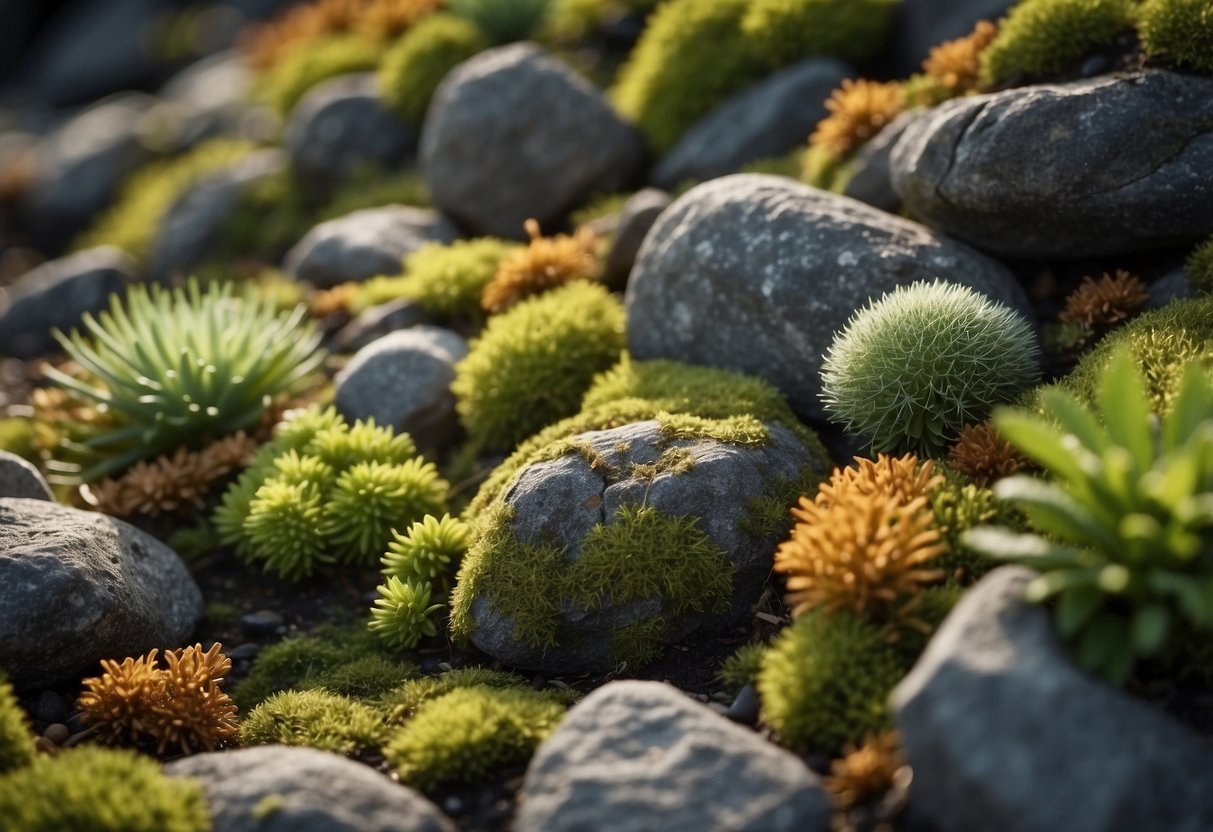
Why choose volcanic rocks for your garden? They are durable, lightweight, and help maintain soil integrity. By incorporating these features, volcanic rocks not only enhance the beauty of your garden but also support its functionality. Your garden can benefit greatly from the use of these versatile rocks.
1) Basalt Pathway Stones
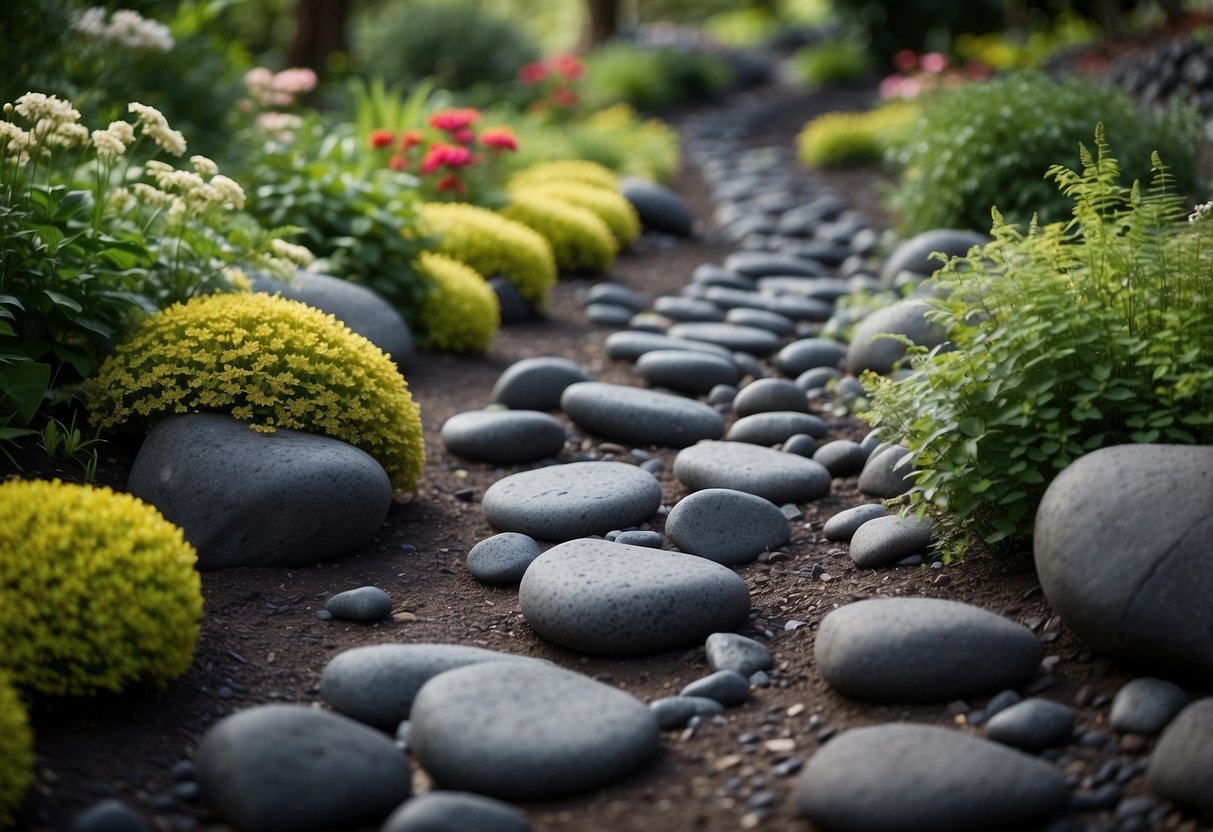
Basalt pathway stones are perfect for creating durable and attractive paths in your garden. Their robustness ensures they can handle heavy foot traffic, making them a long-lasting choice.
You can select polished basalt slabs for a modern look or opt for rough-cut stones if you prefer a rustic feel. Both styles add unique charm to your garden.
These stones are not only strong but also visually appealing. Using basalt pathways will guide your guests through your garden with style.
2) Obsidian Stepping Stones

Obsidian stepping stones can add a unique look to your garden paths. These glossy, black stones create a sleek and modern feel.
Because obsidian is volcanic glass, each stone has a shiny, mirror-like surface. This makes them perfect for reflecting sunlight and adding a touch of elegance.
You can place obsidian stepping stones through flower beds or along pathways. Their dark color contrasts beautifully with green plants and colorful flowers, making them stand out. Plus, their sturdy nature ensures they can handle regular foot traffic without damage.
3) Lava Rock Mulch

Lava rock mulch is a great choice for your garden. It’s light because of the air pockets inside.
Using lava rock as mulch helps keep the soil in place and protects it from erosion.
Lava rocks also allow water to pass through easily, improving drainage and keeping plants healthy.
For more details, visit Volcanic Rock for Garden.
4) Pumice Garden Sculptures

Pumice is a great material for garden sculptures. It’s lightweight and easy to carve. You can create unique shapes and designs that stand out.
Pumice also has a natural, rustic look. It adds charm to your garden. The porous texture provides an interesting surface that catches the light beautifully.
Consider using pumice to craft small statues or decorative pieces. They can become focal points in your garden and start conversations. For more ideas, check out this article on how pumice can enhance your garden.
5) Tuff Boulders
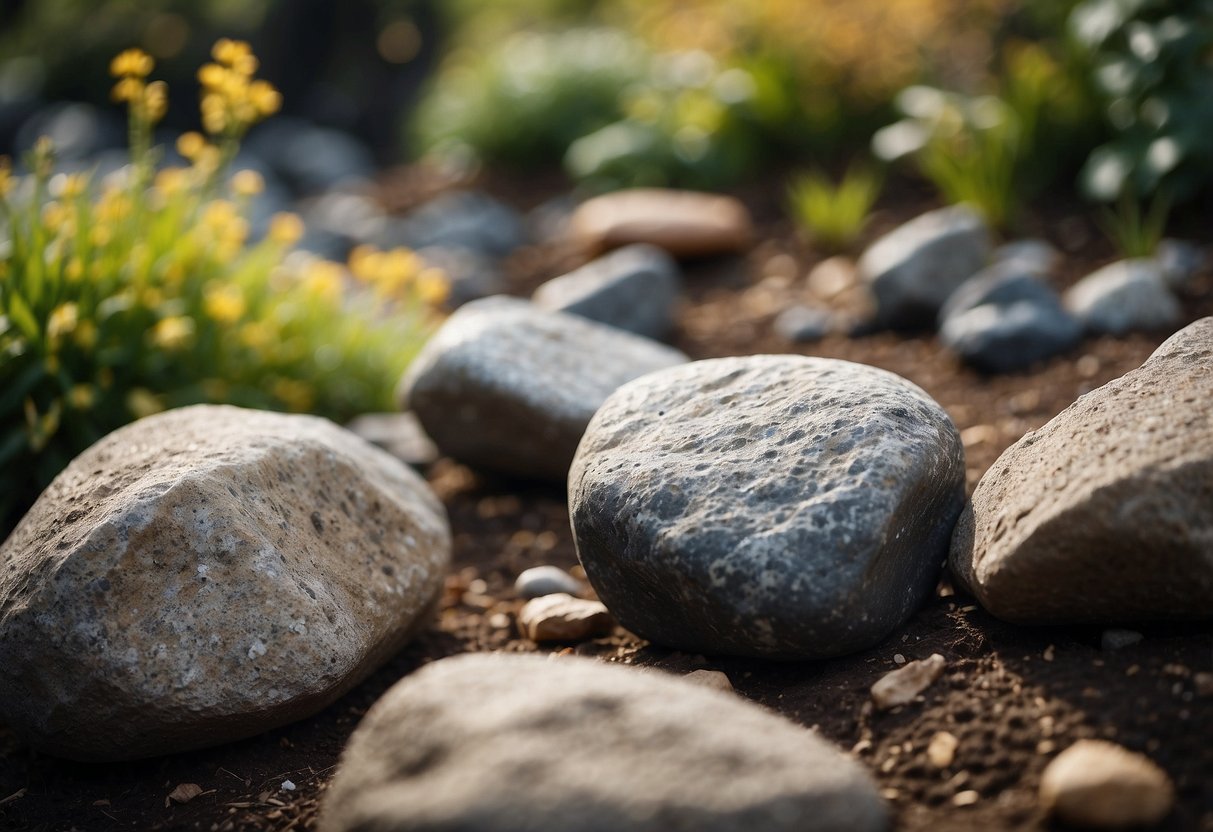
Tuff boulders are a fantastic option for your volcanic rock garden. These rocks, formed from volcanic ash, come in a variety of colors and textures. They can add a unique and natural look to your landscape.
Tuff boulders are lightweight compared to other rocks. This makes them easier to move and place in your garden. You can use them to create focal points or borders.
Plants like succulents and grasses grow well around tuff boulders. Their porous nature helps retain moisture, ideal for supporting plant life. Add these versatile rocks to enhance your garden’s beauty.
6) Scoria Flower Bed Border

Using scoria as a flower bed border adds a rugged and natural appearance to your garden. Scoria is a type of volcanic rock that is lightweight and porous, making it easy to handle.
This rock’s dark red color contrasts beautifully with green plants and colorful flowers. It’s also known for being durable and weather-resistant, ensuring your borders last through various seasons.
You can find scoria at many garden centers or landscaping stores. Arrange the rocks around your flower beds to keep soil and mulch in place while enhancing the overall look of your garden.
7) Andesite Rock Garden Bed
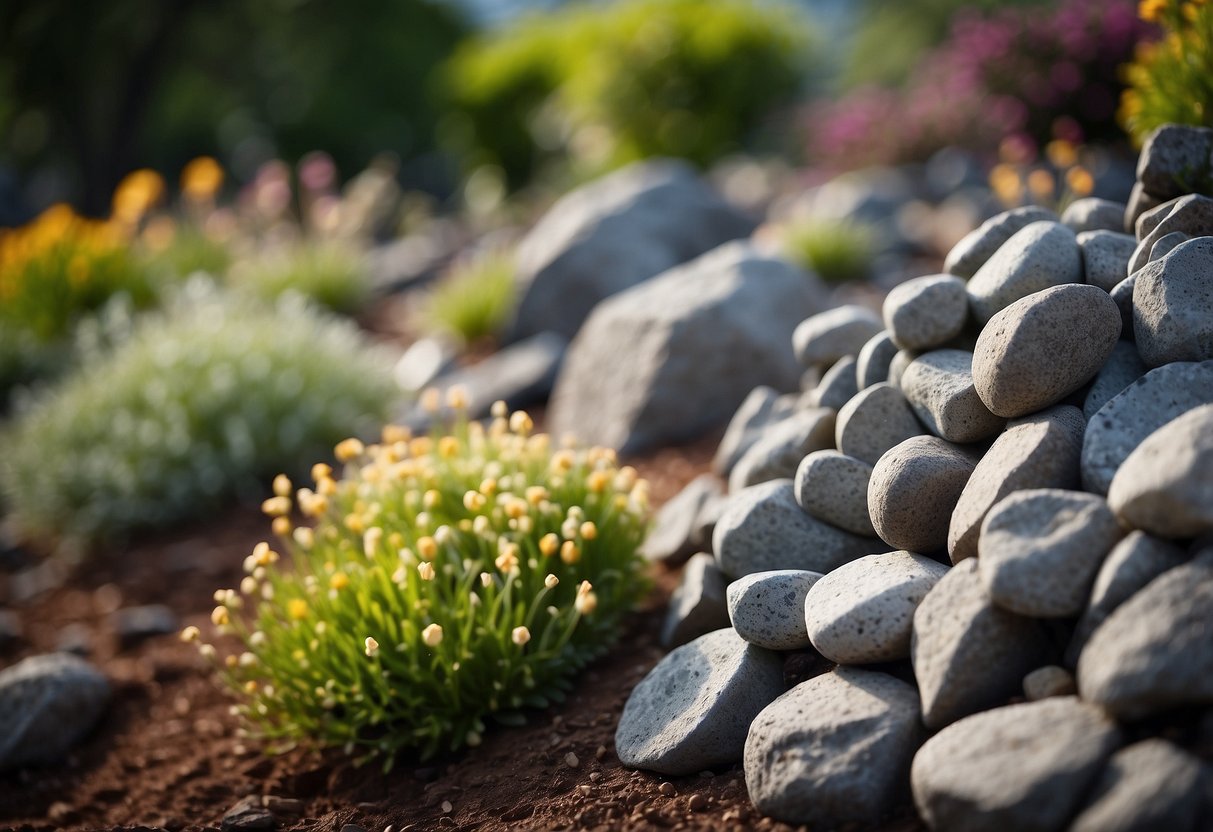
Using andesite rocks can create a striking and unique garden bed. Andesite typically has a fine-grained, dark color, which provides a beautiful contrast to green foliage and colorful flowers.
Consider placing these rocks in a pattern or cluster to highlight specific plants. Add creeping groundcovers to soften the edges and create a more natural look.
Combining andesite rocks with small ornamental shrubs or perennials adds vertical height. Andesite rocks are also durable, helping maintain the structure of your garden bed. This makes them a practical and visually appealing choice for any rock garden.
8) Granite Rock Formations

Granite rocks can add a striking element to your garden. They come in various colors and textures, offering plenty of choices for enhancing your landscape.
You can arrange granite rocks in layers for a tiered effect. This creates a natural look and gives you space to plant small shrubs or flowers between the layers.
Use larger granite boulders as focal points. Position them strategically to draw attention to specific areas in your garden.
9) Volcanic Cinder Raised Beds

Using volcanic cinder for raised beds is a fantastic idea. The porous nature of volcanic cinder helps with drainage, which is crucial for healthy plants.
You can easily arrange cinder blocks to form the borders of your raised bed. This material provides a unique, rugged look that can enhance your garden’s aesthetic appeal.
Volcanic cinder also retains heat well, helping to keep the soil warm for your plants. This quality is particularly beneficial in cooler climates where soil warmth can improve plant growth and health.
10) Rhyolite Water Feature
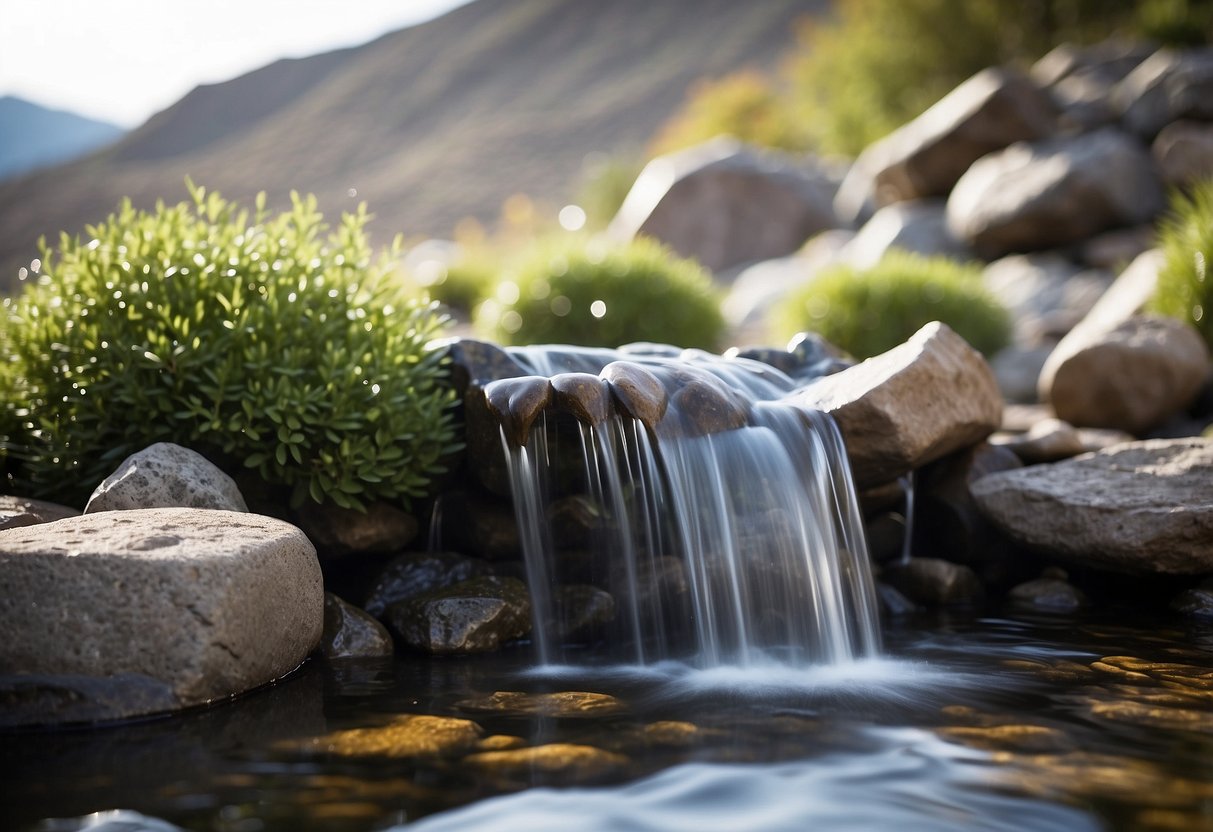
A rhyolite water feature can be a stunning centerpiece for your volcanic rock garden. Rhyolite, known for its light and airy color, creates a beautiful contrast with lush green plants.
You can shape rhyolite to allow water to cascade gently down its surface. This creates a soothing sound that adds tranquility to your garden space.
Placing small shrubs and groundcovers around the base of the feature can enhance its natural look. This type of water feature is perfect for creating a peaceful retreat in your backyard.
Benefits of a Volcanic Rock Garden
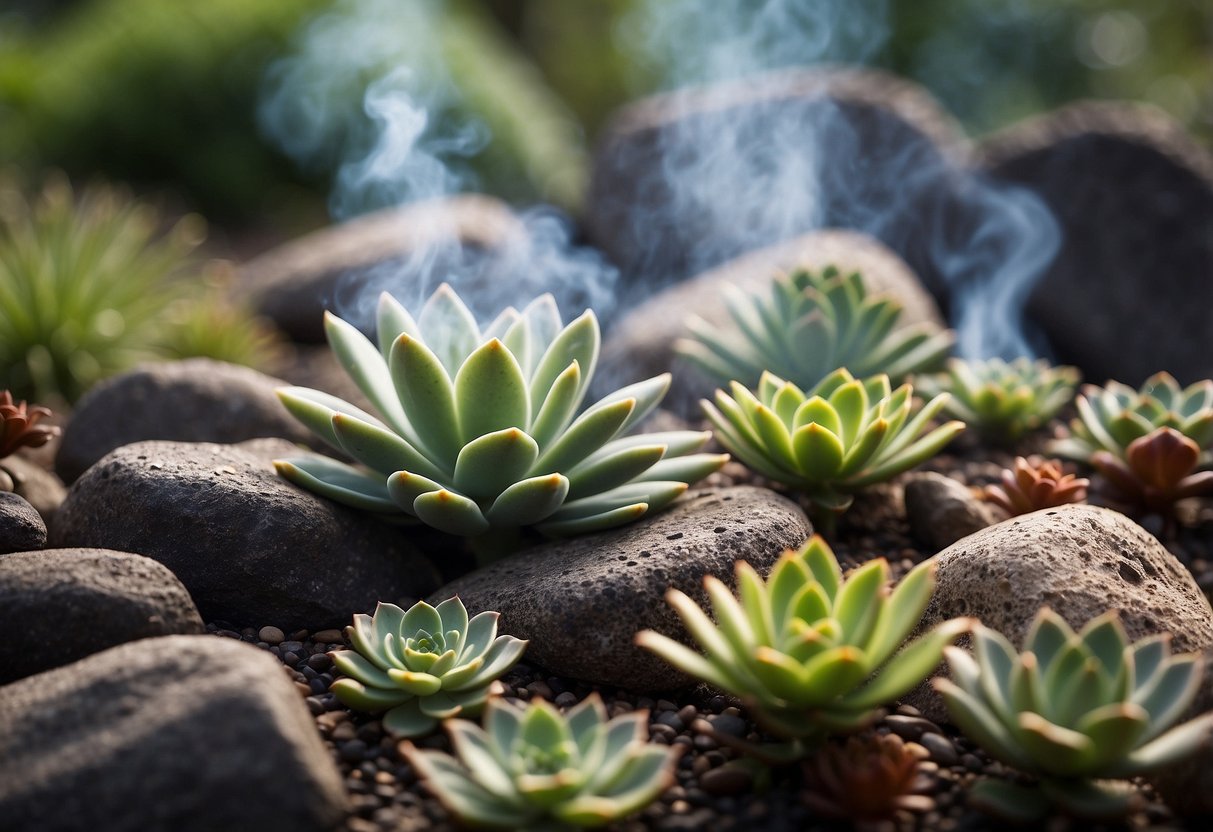
Using volcanic rocks in your garden can bring several benefits, such as better water management, improved aesthetics, and enhanced soil health. These rocks are particularly valuable for drought-prone areas.
Drought Resistance
Volcanic rocks help your garden retain moisture. Since lava rocks don’t compact or sink into the soil, they create air pockets allowing water to penetrate and reach plant roots more efficiently. This feature makes them an excellent choice for areas with limited rainfall.
These rocks also absorb and store heat during the day, which can then be gradually released during cooler nights, creating a microenvironment that supports plant growth.
Aesthetic Appeal
Volcanic rocks add a rugged and natural look to your garden. Their unique shapes and textures can complement various plants and garden themes. They come in multiple colors, including red, black, and gray, which can create visually pleasing contrasts with greenery.
You can use volcanic rocks as mulch, pathways, or decorative borders around garden beds. Their consistent size and shape make them easier to arrange and maintain, enhancing the overall look of your garden with minimal effort.
Natural Soil Enhancement
Although volcanic rocks do not offer nutrients, their porous structure improves soil drainage. This improves the soil structure by preventing compaction, helping roots to grow freely and absorb necessary nutrients from the surrounding soil.
Additionally, the stability of these rocks means they don’t disintegrate over time, unlike organic mulches. This makes them a durable choice for long-term garden health, reducing the need for frequent replacements and minimizing maintenance efforts.
Choosing volcanic rock for your garden aligns beauty with practical benefits, making it an excellent option for sustainable gardening.
Choosing the Right Volcanic Rocks
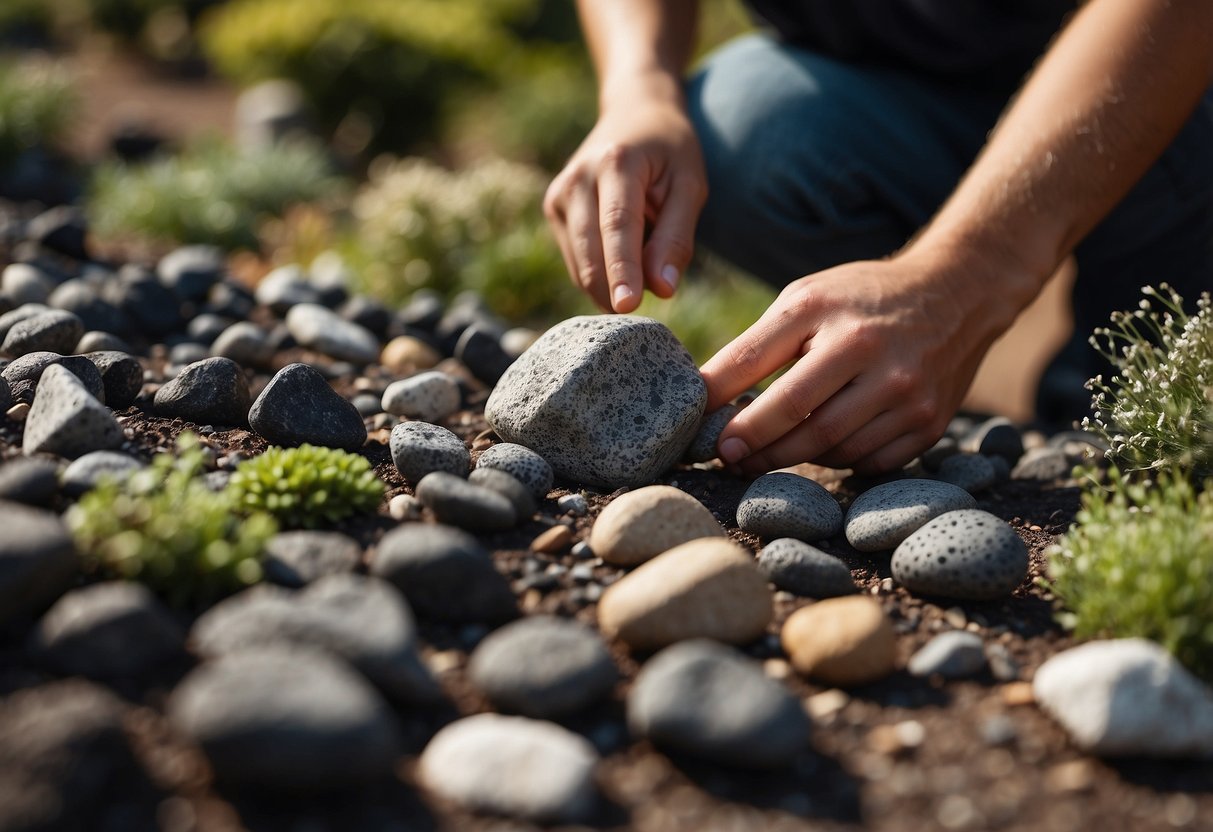
Selecting volcanic rocks for your garden involves understanding the different types, considering their size and shape, and picking the right color to enhance your landscape‘s beauty. These factors will influence not just the appearance but also the functionality of your garden.
Types of Volcanic Rocks
Volcanic rocks are available in various types, each with unique features. Lava rock is popular because it is lightweight and has a porous structure, which helps with drainage. Basalt rock is another option. It is dense and heavy, making it suitable for areas where stability is crucial. Pumice is ideal for plant beds due to its ability to retain water while allowing air to reach plant roots.
Each type has its benefits. Lava rock is excellent for areas prone to erosion because it stays in place. Basalt is great for creating durable walkways or garden borders. Pumice can improve soil conditions, promoting healthier plant growth.
Size and Shape Considerations
When choosing volcanic rocks, consider their size and shape to match your garden design. Larger rocks can create striking focal points or serve as borders and pathways. They draw attention and provide structure. Smaller rocks, like gravel or pebbles, are perfect for mulch and fill spaces between larger stones.
The shape of the rocks also matters. Rounded rocks provide a softer, more natural look, while angular rocks can create a modern, structured feel. Mixing different sizes and shapes can add texture and visual interest to your garden, making it more engaging.
Color Variations
Volcanic rocks come in several colors, from black and grey to red and brown. The color you choose will significantly impact your garden’s aesthetic. Darker rocks, like black or dark grey, offer a dramatic contrast to green foliage and bright flowers. They can make your garden look sleek and modern.
Red and brown rocks add warmth and can create a more earthy and natural feel. Choosing colors that complement your garden’s existing palette is key. For instance, red rocks might work well in a garden with lots of warm-toned flowers, while grey might suit a minimalist design.
Selecting the right color can highlight certain plants, create harmony, or provide an exciting contrast, enhancing the overall visual appeal of your garden.
Design Tips for Volcanic Rock Gardens

Creating a volcanic rock garden involves thoughtful planning to ensure paths, plant selection, and water features work together to create a natural and pleasing space. Each aspect plays a crucial role in the garden’s overall aesthetics and functionality.
Creating Paths and Borders
Using volcanic rocks for paths and borders can help define different areas in your garden. You can place larger rocks along the edges of paths to create natural-looking borders. For walkways, consider using smaller, flat volcanic rocks.
Arrange rocks in a way that guides visitors through the garden naturally. Curved paths can make the space feel larger and more inviting.
A mix of rock sizes and shapes will add visual interest. Using darker volcanic rocks can create a striking contrast with lighter plant tones. Always ensure paths are stable to walk on and avoid creating tripping hazards.
Complementary Plant Selection
Choose plants that thrive in rocky, well-drained soils, like those in volcanic rock gardens. Opt for a mix of perennials, small shrubs, and groundcovers.
Succulents and cacti are perfect choices for dry, rocky environments. Plants like sedum, thyme, and euphorbia can add variety and color.
Ornamental grasses can provide vertical height and movement. They soften the appearance of rocks and can handle rocky soils well. Using a variety of foliage colors and textures can help create a more dynamic and visually appealing garden.
Incorporating Water Features
Adding a water feature, like a small pond or fountain, can enhance the tranquility of your volcanic rock garden. The dark color of volcanic rocks can make water features stand out beautifully.
Consider using natural-looking materials to blend the water feature seamlessly with the rest of the garden. Small pebbles or gravel can help create a smooth transition between the water and surrounding plants.
Ensure the water feature is properly placed to become a focal point without overwhelming the garden. Maintenance is important; keep the water clean and free from debris to maintain a healthy and attractive garden space.
By thoughtfully integrating these elements, your volcanic rock garden can become a serene and visually stunning space that you’ll enjoy for years to come.







